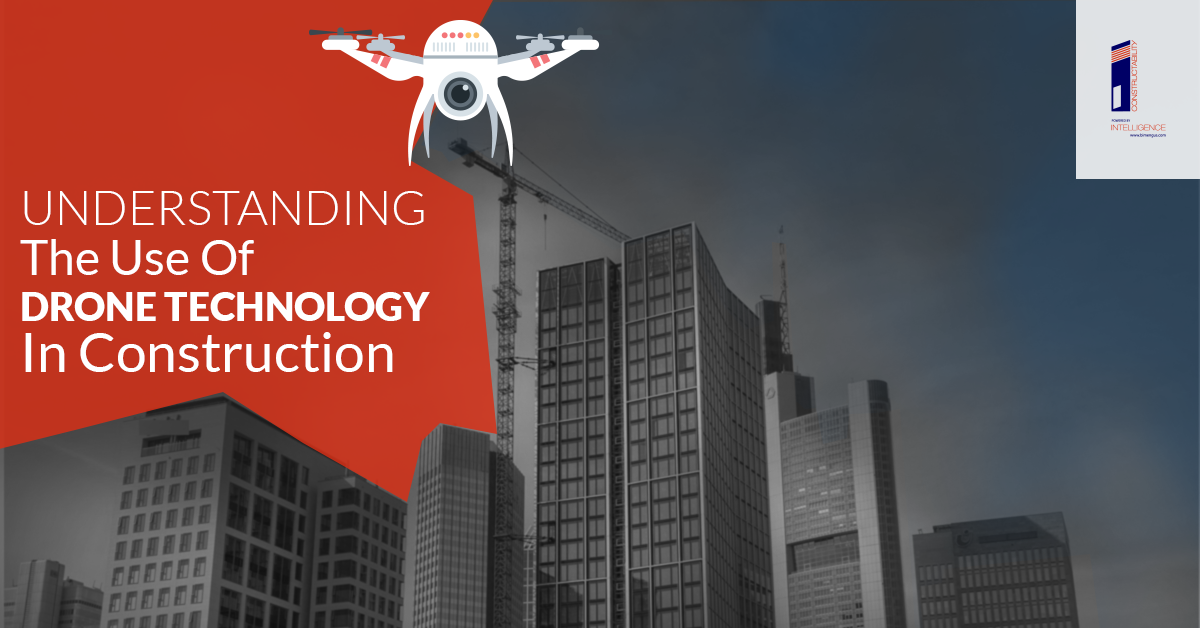Understanding The Use Of Drone Technology In Construction
The booming adoption of BIM technology and increasing demand for digital data is gearing up in the construction industry. Thus, thriving need for the use of drone technology is waving at a very high speed. In this article, let’s discuss the drone technology and its potential to transform the building sector.
The construction industry is heading towards a world where digital information is a vital part of performing any business due to its enriching benefits. The present construction sector is keen on adopting BIM technology and thus accelerating the use of digital information.
Drone technology is one of the leading tools an organization can use to produce digital data. Various other methods include ground-based scanning, 3D laser scanning. Today drone technology implementation at a rapid speed proves safe as well as cost-effective on any job that requires the digital information.
Take a look at some exciting facts about drone technology:
- Drone technology is going to be disruptive in the construction industry in coming years. With effective implementation of the technology, it will undoubtedly provide a significant edge in this competitive building industry.
- In coming future drone technologies will boost and redefine construction business. Of all sectors, the construction industry will leverage best prospects of using drone technology.
- It also seems that drones in the construction industry will play a significant role in digitalization.
Drones in Construction
According to the survey, the construction firms, surveyors, architects as well as engineers were already using drone technology, and of those who were not using, almost 70% of them planned to use it in coming future.
With the seamless advantages of the drone technology, it will transform traditional workflows, as well as help, digitalize the construction sector. Whereas, the early adopters already see the positive impact on their operational processes. They are now able to monitor and inspect their project materials and assets in a much better way.
Drone Technology and BIM
Drone technology is having various applications within the construction industry. Presently they technology is useful in surveying, photography, asset inspection and monitoring work progress on-site.
Drones are ready to revolutionize the construction industry through the use of 3D modeling. It will help in reducing the amount of time it take to design, analyze and manage a structure or implement any changes. 3D models are capable of covering entire project life cycle, right from initial planning to operation and maintenance. As a result, onsite and offsite management can enjoy a crystal clear understanding of overall project performance. It will also help in maintaining consistency of data and quick response to the changes.
The drone technology has many uses within BIM, let’s take a quick view:
3D Modeling
drone technology can easily create a 3D model (point clouds) of a large area. It can also be combined with a ground-based laser scanning or conventional surveying to produce the complete 3 D model. The 3D models are then imported into BIM or CAD models for further comparisons with design plans. Or else, it can also use to create the intelligent 3D model.
Monitoring work progress
Drones are the best way to track the overall work progress in an organization. They provide managers with data to track a projects progress, manage resources, minimize downtime as well as keep schedule within budget. They also allow the team to verify the ‘as-built’ project status in comparison with design models using 2D & 3D data.
Orthomosaics
Drones can capture high-resolution aerial images of the whole project area and merge them to form a seamless mosaic. The data then can be further useful in BIM to understand the advancements area.
The 3D models can bring the real world or ‘as-built on the desk so that the user can carry out following task easily including approval of conditions, monitoring construction progress, carrying out various structural functions, etc.
In recent years, we are experiencing a lot of advancements in positioning accuracies through the use of drones, developments of photogrammetry software and the extensive use of LiDAR on drones. The 3D point clouds model provides exact efficiencies and is proving beneficial in the construction industry.
How drone technology use within BIM?
To understand this, let’s take an example of an existing building where a laser scanner is used to get data inside the building and drone is used to capture data on the external of the structure as well as the surrounding area. Integrating the information from both the datasets allows a complete representation of a building. This information then can be used for various construction needs including renovation, visualization of the building from interior and exterior, etc.
A fundamental benefit of using drone technology and photogrammetry software to create the 3D maps or models is that the data can now import into BIM or CAD file formats, such as dwg, dxf, obj, las. It makes a straightforward integration of digital data into workflow process.
Future of Drone Technology
The adoption of drone technology is set to enhance in coming future. And yes, it is sure that we will witness many technological advancements and innovations regarding development.
The technological improvement will certainly make drones fly faster while improving the safety. The most significant benefit will come from improvements to drone itself. The future drones will in-built with sensors and the use of interpretable data analytics to analyze real-time information through machine learning and algorithms.
Also Read: Top notch Construction Industry trends 2017
